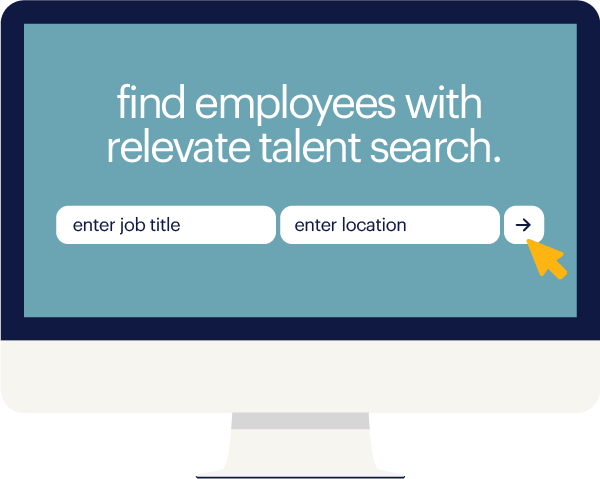No matter what products and services your company provides — from artisanal chocolate chip cookies and shaving cream to health insurance and enterprise software — every business needs people to market and sell those offerings. So while it's no surprise that the number of marketing and sales jobs is growing more than the average for all other occupations, what is surprising is how much faster that growth is happening — faster than even labor-insights leaders expected.
Take, for example, a 2012 Monster study that forecast a 12 percent increase in marketing manager jobs by 2022, which would have brought the national total to 224,000 positions. But by 2019, the U.S. Bureau of Labor Statistics (BLS) found that there were already more than 286,000 marketing manager jobs, with an additional increase of eight percent expected by 2028. Factor that growth across your entire marketing and sales teams, and you'll see why LinkedIn highlighted multiple marketing and sales positions in their 2017 and 2018 Emerging Jobs Reports as seeing the largest overall hiring growth nationwide.
So what can your company do to attract — and retain — top talent in the marketing and sales arenas, especially in a competitive market in which top candidates are only on the market for as little as 10 days? Read on for steps you can take to mitigate the three biggest recruitment pain points hiring managers are experiencing when staffing for marketing and sales jobs today.
build relationships with passive candidates
If you think recruiting in today's market means posting your open positions on the standard job boards and waiting for a flood of resumes to come in — well, you're going to be waiting for quite a while, given that 70 percent of candidates are passive job seekers: those who are too busy applying expert knowledge in their current role to actively search for new opportunities. And with more open jobs than there are people to fill them, employers need to prioritize developing ongoing relationships with these hard-to-source candidates. Here are some steps you can do to build relationships with passive candidates:
upskill your current team
Building relationships with passive candidates doesn't just mean finding external professionals, but those already in your rank and file. So formalize an internal program for upskilling and career advancement to create a pipeline of talent that already knows the ins and outs of your company.
This is especially true when it comes to marketing and sales teams, as there are different specialties everyone can learn to expand their skill sets (say, an email newsletter specialist moving over to a content marketing manager role responsible for multiplatform campaigns). Plus, offering employees opportunities to advance within the company and tackle new challenges shows that you're invested in their careers, which will result in a motivated, engaged workforce.
think of each member of your team as a recruiter
Tapping into the professional networks of your marketing and sales teams will help to develop the long-term talent pipeline your company needs during times of rapid change. No matter how many recruiters you have, it's your current employees who serve as the strongest ambassadors to passive candidates, so leverage all of those existing relationships by creating a referral program that incentivizes your them to suggest people they know from their network.
Not only will referral candidates already have an understanding of your culture and whether they're a fit before they even apply, they'll also likely stay with your company for 25 percent longer, too.
work with a staffing partner
Your marketing and sales teams power your revenue growth, so making a bad hire can not only cost you hundreds of thousands of dollars in recruitment costs, but it can also negatively impact your bottom line. To ensure you're sourcing the best marketing and sales pros out there who aren't actively looking for a new role, it pays to develop a partnership with a staffing firm.
Working with a staffing expert will benefit you in the short term by matching you with superstar candidates to fill your current openings, and their deep expertise in marketing and sales functions and knowledge of current hiring trends will add value to your overall recruitment game over the long term.
strengthen — and market — your employer brand
Gone are the days where a well-stocked kitchen and an annual staff picnic branded you as an employer of choice. Today's workforce wants to be part of a positive culture and to find meaning and a larger sense of purpose in their work. So to attract top talent, you'll need to prioritize cultivating a strong employer brand. Not only do 72 percent of HR leaders believe employer branding has had a significant impact on their ability to hire the best candidates out there, but 62 percent of professionals rank employer brand as the deciding factor when applying for a job.
Be aware, too, that when hiring for marketers, your employer brand needs to be especially compelling, since these pros will be able to quickly sniff out poor branding. You wouldn't launch a new product without a strong value proposition, right? The same goes for your how you market your company as an ideal place to work. Here are some steps you can do to strengthen your employer brand:
use social media to engage new talent
With 59 percent of job seekers stating that a company's social media presence factored into their decision to accept a job offer, having a strategic plan in place to build relationships with candidates through your social channels will pay dividends when it comes to hiring. Use these platforms to share insights into your workplace culture and show your employees at work. Then, take your marketing to the next level by publishing employee- and customer-generated content that speaks to your company's values, social impact initiatives, products and services.
share your stories
There's a reason why content marketing captures three times more leads than paid search advertising: People want engaging stories to read from the companies they support. The same holds true for your employer branding. Develop an ongoing mix of blog posts, social campaigns and video content to pull back the curtain on what makes your company special. (Your content marketers will know how you should do this!) Let job seekers see what it's like to be part of your company by speaking to your employees' successes and what differentiates your company in the hiring space, like a focus on work/life balance, training and professional development events and flexible work schedules.
write job descriptions as an extension of your employer brand
Marketing and sales professionals thrive on clear, engaging communications, so a job description that uses stiff language to expound on a long list of duties won't hold their attention for long. To set your posting apart from the pack, write a description that succinctly outlines the value of the role's contributions to the company's success and excites them to become a part of your mission. It's easy to get lost in a sea of bullet points about required career experience and what sales territory the role oversees, so focus on the human aspects of the job as well — how the products and services they'll help market and sell will positively impact the lives of the people who use them.
make sure your compensation and benefits are competitive
With salary calculators and employer review sites making compensation data more transparent than ever, today's marketing and sales pros know their value — and what it will cost you to get them on board. Taking the time to rethink your compensation and benefits package to ensure they're competitive for both your industry and your operational markets will help keep you from losing out on your top candidate because a competitor knew how much money to bring to the table. Especially in the marketing and sales arenas, where salaries can vary widely (think account manager as opposed to an application sales executive) and change often, you need to make sure your offerings are meeting your candidates' expectations. Here are some steps you can do to make your compensation and benefits competitive:
audit your compensation levels
With so much rapid change taking place in how marketing and sales teams are structured and how much they're paid, you may have fallen behind the pack if it's been more than a year since you last reviewed your compensation and benefits offerings. Dive into your research by consulting salary guides and BLS data for key information, and start asking tough questions like:
-
Are salaries, commission and responsibilities aligned across our marketing and sales teams, or is a marketing manager only making slightly more than a coordinator?
-
Do our compensation levels match those of other companies in our industry operating in our specific market? And what can we do to get further ahead of the pack?
-
Is our commission structure strong enough to inspire each member of our sales team to contribute their best work, day in and day out?
make sure your benefits package is competitive, too
Still think that telecommuting, remote work and flexible schedules are "perks"? Think again. Such offerings are now expected by employees, and given the array of digital tools that let remote teams communicate and track projects in real time, productivity can actually increase when people don't need to worry about long commutes and whether they'll be able to pick up their kids from school. And now that perks and benefits are often deciding factors when choosing an employer, you'll get ahead of the game by thinking beyond salary and making those benefits strong, too.
have a backup plan ready
In such a candidate-driven job market, you need to have a portfolio of additional benefits ready to offer in case negotiations get hot during the final stage of the hiring process, especially when it comes to landing your top candidate for a senior-level role. For example, if you can't match the candidate's desired salary, be prepared to offer other perks like a signing bonus or an extra week of vacation in order to seal the deal. Showing this extra initiative to get them to join the team will also pave the way for increased dedication and engagement down the road.
how a staffing partner can help
Don't forget — if these steps seem overwhelming, a staffing partner can easily lighten your burden. Start a conversation with one of Randstad's staffing experts to see what they can do to match you with the best-fit candidates for your open marketing and sales positions. Or head over to our Find Employees portal right now to browse our nationwide network of prescreened, vetted talent.








